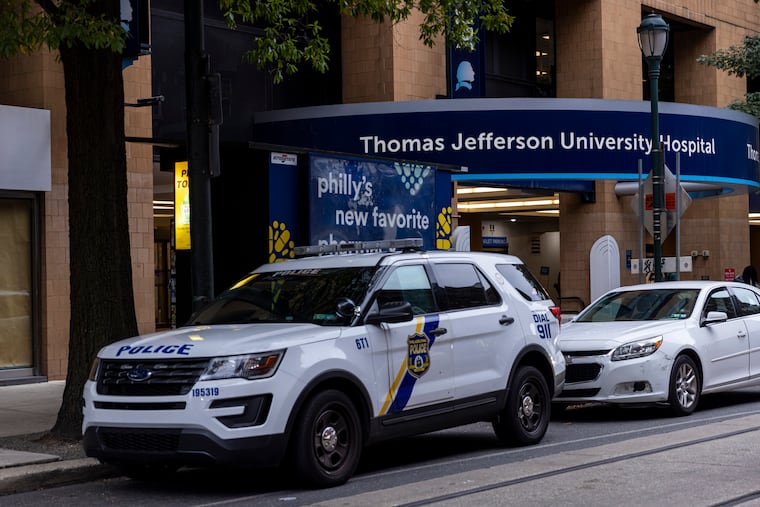‘It all happened so fast’: As the accused Jefferson shooter was held for trial, a nurse described the chaotic scene
Accused gunman Stacey Hayes faces murder charges in the fatal shooting of Anrae James on a hospital floor.

Mark Campiglia’s overnight shift as a nurse at Thomas Jefferson University Hospital had started out like any other.
But shortly after midnight last fall, as he was sitting at a hallway computer, Campiglia noticed a coworker walking toward him with a gun.
And within seconds, Campiglia testified Wednesday, he was ducking for cover as that coworker, Stacey Hayes, opened fire on another colleague, Anrae James, from near-point-blank range on the hospital floor.
“I heard ‘pop, pop, pop,’ and [James] started staying, ‘Ow! ow! ow!’” Campiglia said. “It all happened so fast.”
Campiglia’s testimony was a key part of a preliminary hearing for Hayes, who is accused of fatally shooting James before fleeing the hospital. The proceeding had been delayed several months over questions, since resolved, about the status of Hayes’ mental health.
At the end of Wednesday’s hearing, Municipal Court Judge Wendy Pew ordered Hayes, 55, held for trial on all charges, including murder — for James’ killing — and attempted murder and aggravated assault for the second act in his alleged crime rampage that night: a shootout with police in West Philadelphia about an hour after driving from the hospital in a U-Haul truck.
One of the officers who took part in that firefight, Douglas Miller, also testified Wednesday, telling Pew that Hayes had fired an assault-style rifle at him and four of his colleagues near the School of the Future in Parkside around 1:30 a.m. on Oct. 4. Two of the officers were struck, Miller said, and one of them, Arcenio Perez, suffered “catastrophic” injuries to his forearm, which have caused him to lose motion in his hand.
Asked how many shots he believed Hayes had fired, Miller said: “More rounds than I could count or recall.”
Assistant District Attorney David Osborne played brief bodycam footage captured by Miller as he arrested Hayes, who was shot by police in the neck during the gun battle and fell to the ground.
Osborne also showed Pew earlier video from the hospital floor, in which Hayes can be seen approaching an unsuspecting James seated at a hallway computer, then opening fire and continuing to shoot as James runs away and falls to the floor.
It remained unclear Wednesday why Hayes may have wanted to shoot James. Campiglia, under questioning from Hayes’ lawyer, said he was not aware of any animosity between the two men, both certified nursing assistants who often worked with each other.
Hayes betrayed little emotion throughout the proceeding, often staring straight ahead and appearing not to look at any witnesses or video. He had previously been ordered to receive mental health treatment before his case could proceed, but will now be held at a city jail to await trial instead of at Norristown State Hospital.
His lawyer, Gary Server, told Pew that Hayes had been under suicide watch while in custody, and asked that Hayes be placed in a unit where he could receive protective monitoring.
The crime at Jefferson attracted national attention and shook employees at one of the city’s busiest hospitals — some of whom sat in the gallery Wednesday in blue scrubs. Jefferson officials later admitted they waited too long to notify employees of an active shooter in the building, blaming “process deficiencies and human error” for the delay in communications.
Hayes is expected to be formally arraigned next month. A potential trial is likely months away.